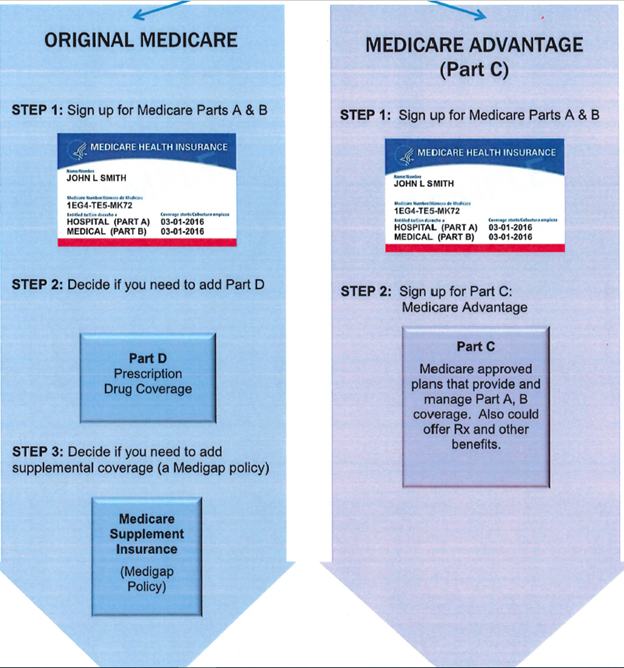Online Course
NDNP 803 - Executive Leadership and Healthcare Economics
Module 6: Role of the Government in Health and Medical Care
Public health insurance - medicare
There are two key programs for public health insurance in the United States, Medicare and Medicaid.
Medicare Who is covered? Medicare is a national health insurance program for a subset of the population in the United States
Medicare originally covered individuals 65 years of age or older, regardless of income or medical history, as long as they or their spouse contributed to Social Security for at least 40 quarters, Railroad Retirement, or federal retirement programs.
Medicare has been expanded to cover certain permanent disabilities, end-stage renal disease, and amyotrophic lateral sclerosis (Lou Gehrig’s disease)

There are four parts to Medicare: A,B,C,& D.
MEDICARE PART A Hospital & Skilled Nursing Facility (SNF)
Part A covers inpatient hospital services, limited skilled nursing facility services for rehabilitation, home health care, and hospice services.
Most individuals age 65 and older are automatically eligible for Part A coverage if they are U.S. citizens or permanent residents and have made payroll tax contributions for 40 quarters; enrollment is mandatory for eligible individuals.
Individual eligible for Part A do not pay a premium for coverage. However, there are deductibles, coinsurance, and limits. As healthcare providers it is important to understand the individual costs associated with Medicare. Some individuals do not understand that no premiums does not mean no costs.
Below are some current costs:
In 2023, Part A deductibles were $1,600 per benefit period for each episode or “spell of illness” for an in-hospital stay. Beneficiaries generally pay a coinsurance amount for extended hospital stays of 61-90 days or skilled nursing facility days of 21-100 days.
Skilled nursing is covered for the first 20 days. The cost per day for nursing facility stays was $200 for days 21-100 and beneficiary is responsible for all costs beyond 100 days.
Part B Doctor/Outpatient Services
Premium 164.50 a month, deductible $226/year and Co-Insurance 20% approved amount.
Whether an individual chooses Original Medicare or Medicare Advantage (Part C) they enroll in Medicare Part A & B. If they enroll in Part C, the prescription plan is included.
If they choose Original Medicare the individual need to enroll in a Part D prescription plan. They should also consider enrolling in a Medicare Supplemental Policy that covers some of the costs that Medicare does not e.g. the 20% co-insurance for Part B depending on the policy. Because of the risk of substantial out-of-pocket costs to Medicare beneficiaries through deductibles, coinsurance, and uncovered services, about 90% of Medicare beneficiaries have purchased supplemental insurance coverage (Medigap) The goal of Medigap policies is to assist the beneficiaries in covering the relatively high cost-sharing expenses of Medicare and to cover benefits Medicare does not cover
This website is maintained by the University of Maryland School of Nursing (UMSON) Office of Learning Technologies. The UMSON logo and all other contents of this website are the sole property of UMSON and may not be used for any purpose without prior written consent. Links to other websites do not constitute or imply an endorsement of those sites, their content, or their products and services. Please send comments, corrections, and link improvements to nrsonline@umaryland.edu.